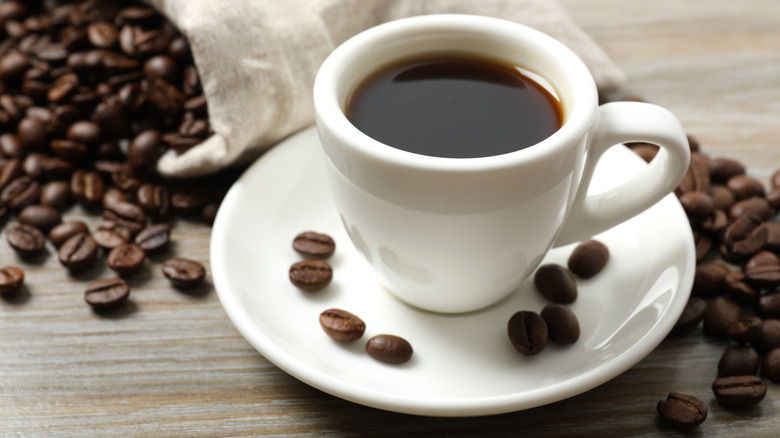How Much Does Blooming Coffee Impact Overall Flavor?
The key to great coffee at home is precision. If you love experimenting with ways to improve your morning cup, you might be familiar with the process of blooming. This extra step essentially involves wetting the grounds and waiting a little before pouring in the rest of the water. To find out why it's necessary and how it affects the flavor of the finished drink, Food Republic consulted Jee Choe, a coffee and tea sommelier who started her coffee blog Oh, How Civilized in 2012.
Carbon dioxide forms in coffee beans when they're roasted, and this reacts with hot water when you pour it over — if you've ever noticed the grounds swelling and puffing up, that's what is happening. Soaking the grounds first allows the gasses to escape before you brew the coffee. "The carbon dioxide can create a sour taste in the coffee, so by blooming coffee, you can improve the flavor," says Choe.
How old your coffee is also determines how much CO2 is in it. "Freshly roasted coffee will have the most carbon dioxide," explains Choe. "I recommend brewing and blooming coffee two weeks after it has been roasted for optimal flavor." As well as removing more CO2 gas, blooming also allows the full flavor of the beans to infuse into the water. The result is a much richer and more well-balanced taste. Though it sounds technical, blooming is actually a quick and easy process.
How to bloom coffee for the best results
To perfectly bloom your coffee, Choe advises, "The best way to bloom coffee is by pouring hot water onto the ground coffee — enough to wet the grounds — then waiting 30 seconds before adding any more hot water." A good rule of thumb is to use roughly 10 to 20% of the amount of water you'll be using in total when wetting the grounds. "During the bloom, you should see foaming and bubbling, which is normal," she says. "This is the coffee releasing any extra gas."
There's no need to stir the coffee when blooming, according to Choe, though there is a technique that can help the process: "One tip is to use a gooseneck kettle to pour the water into the coffee in a circular motion, starting from the center and moving outwards," she says. "This will help to evenly soak the grounds."


